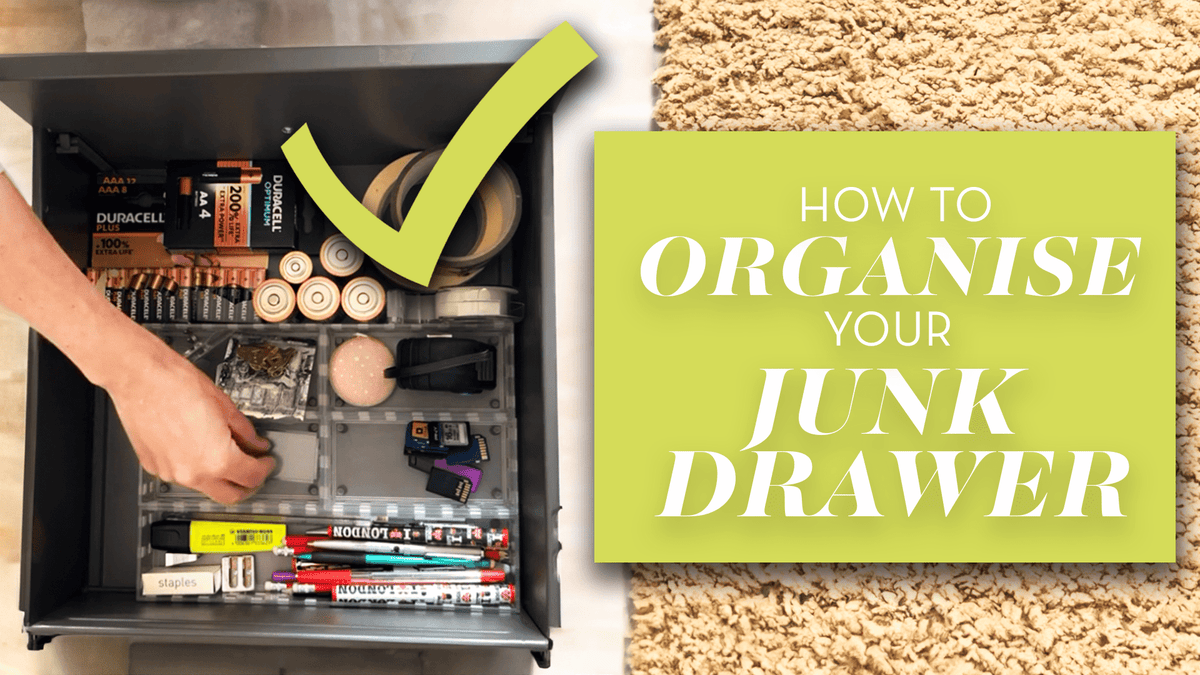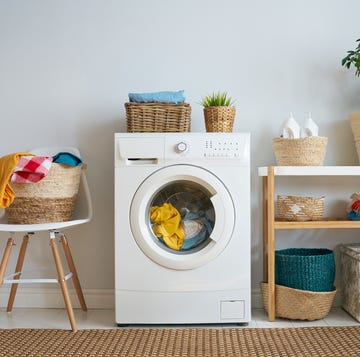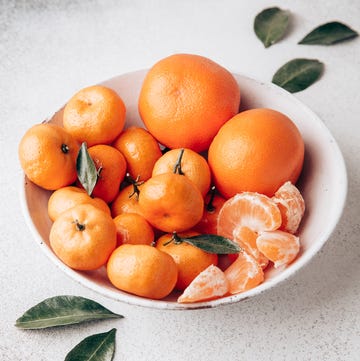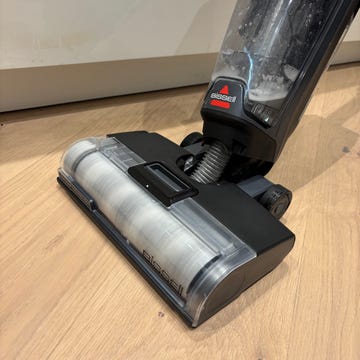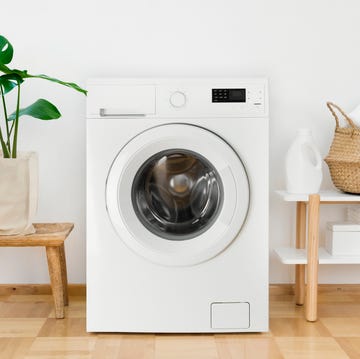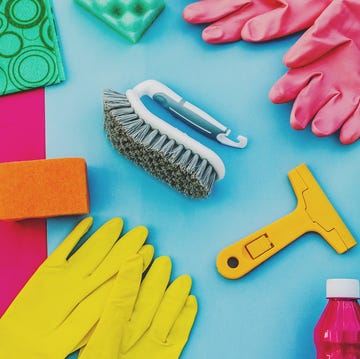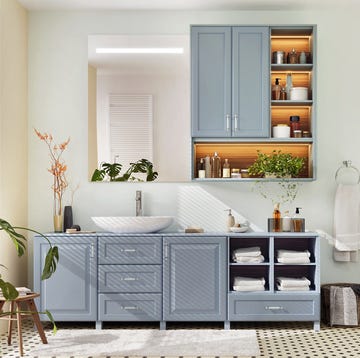I use vinegar to clean what I can around the home; be it surfaces, mirrors, shower heads or sinks. Its acidic properties make it great for breaking down limescale. But one bugbear stops me using it everywhere – namely, the smell. As much as I love the natural qualities behind this green cleaner, I hate leaving the bathroom smelling like a fish and chip shop.
However, all of that’s about to change. Last weekend, I used Dri-Pak’s Citric Acid to clean my home. If you’ve not heard of it before, citric acid is an organic compound derived from lemons that features a similarly acidic nature to vinegar, but without the smell. I was sceptical about whether this alternative green cleaner could be a suitable replacement for vinegar, so I gave it a thorough test throughout my home, with surprising results...
Bathroom
I started in my bathroom. While citric acid is a powder rather than a liquid, you can dissolve it in water to create your own version of a surface cleaner. Following the pack instructions, I measured out 40g of the citric acid and dissolved it in 500ml water. It needed a little stirring but soon dissolved. I then tipped it into an empty spray bottle and was ready to start spritzing.
My bathroom sink was the first test; it wasn’t too dirty but there was some soap scum and light limescale on the surface. I sprayed on the citric acid solution and left it for a couple of seconds, before wiping it away with a microfibre cloth. It didn’t let me down – my sink was spick and span in seconds, with very little scrubbing needed. The finish was glossy and shiny; it even felt smooth to the touch. I couldn’t ask for more. There was no distinctive smell, either, which was much appreciated after my vinegary predecessor.
To give the citric acid more of a challenge, I sprayed it on to a heavy limescale deposit that had developed on the counter behind the sink. It had been there for some time, so I didn’t think I’d see much of a change, but I’d underestimated this cleaner once again. The limescale was gone in as little as 30 seconds.
I decided to see just how good it really was at removing limescale, so I gave it the hardest test in the house – my bathroom scales. These sit directly beneath my hand towel and so get covered in drops of water day in, day out. Over the years, the limescale has pretty much formed a cover over the glass surface. I try to clean it weekly with my usual bathroom cleaner, but it makes little difference.
I left the citric acid for a few minutes to give it a fighting chance – but, honestly I held out little hope. Once again, I was put in my place. It didn’t remove all the scale (if only!), but it made a sizeable dent, like no cleaner I’d used before. I think just one or two more applications would remove most of it. As it’s a green cleaner, I predicted gentle cleaning capabilities, but the results on limescale were impressive.
The only area where citric acid let me down was the shower screen. I expected a pristine finish once again, but the results were admittedly mixed. While it removed all traces of the watermarks, the glass was covered in smears by the time I was finished. I gave it a second application using a microfibre cloth and a squeegee for the best finish, but the smudges persevered. Having said that, the watermarks were gone, so it wasn’t all bad news.
Finally, you can use citric acid to descale your toilet. For a heavily stained toilet, the instructions online advise you to dissolve 250g (a whole packet) in half a bucket of hot water, then tip it into the toilet bowl. You then leave it overnight and flush away the next day. I didn’t have a heavily stained toilet, nor did I have a spare pack of citric acid, so I rounded down the amounts and used 2 litres of water with 50g crystals. I couldn’t see much of a difference in my toilet, but there were no issues with flushing it away.
Kitchen
I then moved on to my kitchen. Starting with the surfaces, the citric acid spray was great for shifting everyday grease and grime. Dried coffee stains needed an extra scrub, but it got the job done. I used it on my ceramic hob, too. It was fine for light stains once again, but struggled with burnt-on marks. It also left behind that same smeared finish as it did on my shower screen, which wasn’t ideal. So, I’d avoid using it here. But where it did come into its own was the kitchen sink. The watermarks were gone after a few scrubs and the sink was left gleaming. Much like vinegar, the acidic properties were handy here.
I was so pleased with the results, I also used the spray on the outside of my stainless steel toaster. A bit of scrubbing was needed to remove oil splatters from cooking on the hob, but they were gone in a few swipes. I used it on the exterior of my kettle, too, to get rid of the sticky surface that had developed: no complaints there.
One of the big selling points for citric acid is its effectiveness at descaling a kettle, so I had to give this a go. According to the instructions, you just boil a half-full kettle, unplug it, then tip about a 1/3 of the pack into it, wait for 15 minutes and rinse it away.
I found it a little awkward and somewhat dangerous to tip the pack of citric acid into the freshly boiled water; I had to wait a minute or so for it to cool down. I’d likely switch it off before it boils if I were to do this again in the future, following GH’s recommended method instead.
My kettle had a substantial amount of scale on its base, and the citric acid managed to remove about half of it. I think it needed a little longer to completely remove the film. I’d give it a bit more time if I did it again, and check the progress before pouring it away.
My final test involved the dishwasher. You can descale this by filling the detergent dispenser with citric acid and tipping the rest of the pack over the floor of the appliance; then running a normal cycle. I didn’t have enough citric acid to do this after everything else I’d cleaned, so I settled for filling the dispenser.
In fact, one of GH’s recommended methods for cleaning cloudy glasses is to do just that, then add cloudy glasses to the top rack and run it on a normal cycle with nothing else. So I gave this a try.
I didn’t think such a small amount of citric acid would make all that much of a difference. How wrong I was! There was a substantial difference in just one cycle. Sure, there were still some small signs of limescale, but it was definitely reduced, and you had to hold the tumblers up to the light to see it. I recommend giving this tip a go for sure.
Verdict
After a long day’s cleaning, I was converted. Citric acid has so many uses all over the home, especially when it comes to limescale removal. It’s a handy general surface cleaner, cutting through soap scum as well as grease with ease. Stainless steel sinks and appliances were shining by the time I finished, needing just a couple of scrubs to remove watermarks. The only surface I won’t be using citric acid on again is glass, where you want to avoid smudges and smears.
It also comes in handy for descaling appliances. It was effective in my kettle (although I could have left it a little longer for better results). I admittedly couldn’t see the difference it made in my toilet or dishwasher (the pipes are all hidden!), but I could definitely see the impact on the cloudy glasses I left in the upper rack.
Considering I managed to clean my kitchen and bathroom, as well as descale my toilet, kettle and dishwasher, all from one box, this natural cleaner is good value for money, to say the least. It has easily earned a permanent place in my cleaning cupboard.
As a final note, I definitely prefer cleaning with citric acid compared with vinegar, mainly because there’s no harsh smell left behind. Bear in mind, it might be worth moving the powder to a sealed container; if it comes in cardboard packaging, it will be vulnerable to the damp.












